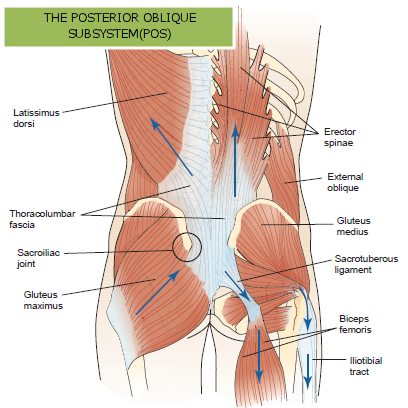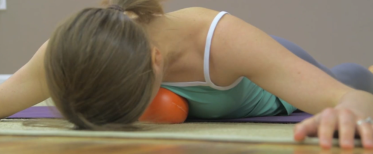If you’d like to extend your longevity in running and potentially take home a medal in the years to come, add this flexibility practice to your routine!
Most runners I know just want to get out and enjoy their run. They’ll often skip a flexibility practice as a result.
I also know that most runners have aspirations of running as long as their body will cooperate, with dreams of finally winning a race in their age category while others are retiring from the sport. Here’s where a flexibility practice comes to the rescue!
It’s well documented that integrated flexibility training has numerous benefits*
- Decrease chance of injury
- Prevention of the development of muscle imbalances
- Correction of existing muscle imbalances and joint dysfunctions
- Improvement of posture and correct postural distortions
- Enhancement of strength, joint range of motion and power
If you’d like to extend your longevity in running and potentially take home a medal in the years to come, add this flexibility practice to your routine!
An integrated flexibility practice includes both self myo-fascial release, aka SMR, and different types of stretching targeted to your needs and goals. (Check out Optimizing The Use of Your Foam Roller for more science-y reasons to get on a roll).
Since no muscle works in isolation, it is suggested that you vary your flexibility practice, incorporating several muscles as time allows.
This article will focus on a basic practice applicable to most runners. Consult with a certified personal trainer, corrective exercise specialist or a sports medicine doctor who will help you customize your routine. Please review the contraindications list and check with your doc to be sure it’s safe for you to do.
Always be sure to use your best posture (see the fabulous photos), a gently braced core, relaxed breath and the proper density foam roller. If you are more of a visual person, check out the videos in the Resources section below.
Let’s begin!

Before your run, pick 2 muscle groups to work on. This choice is as individual as you are! Choose muscles where you tend to be the most tight.You’ll need about 5-10 minutes prior to your run.
TFL (Tensor Fascia Lata): A powerful and often cranky hip flexor, especially if the majority of your day is spent sitting.
SMR: Lay on a foam roller of proper density, on your side with your elbow directly underneath your shoulder. Locating your TFL begin to roll up and down the muscle, stopping as you find a tight or tender spot. Rest on each spot for about 20-30 seconds or until the discomfort starts to dissipate.

Stretch: In a half kneeling position, align your front knee over your ankle and your back knee under your hip. Gently shift your weight forward and raise your arm overhead. Begin to turn your thumb toward the sky, learning toward the side of your front leg. Hold the stretch at the first point of tension for 30 seconds. Release and repeat on the other side.

Hamstrings: Another potentially cranky group of muscles that flex the knee, extend the hip and control the lower leg.
SMR: Drape your legs over the foam roller, just above your knees with your butt resting on the floor. Lifting your bottom up, begin to roll up and down the muscles from just above your knees to just before your bottom. Stop as you find a tight or tender spot. Avoid rolling on the knee joint. Turn side to side to roll on all three aspects of your hamstrings. Rest on each tender spot for about 20-30 seconds or until the discomfort starts to dissipate. To increase intensity, stack one leg over the top of the other. Repeat on the other leg.

Stretch: Elevate one leg on a sturdy surface. Keep your standing knee unlocked. The height is up to you and your flexibility. Lean forward, resting your hands above your knee. Hold the stretch at the first point of tension for 30 seconds. Release and repeat on the other side.

Calves: This group of lower leg muscles help you push off the ground as you run. Their flexibility is an integral part of alleviating shin splints.
SMR: Drape your legs over the foam roller, just below your knees with your butt resting on the floor. Lifting your bottom up, begin to roll up and down the muscles from just above your knees to your Achilles tendon (just before your heel). Stop as you find a tight or tender spot. Avoid rolling on the knee joint. Turn side to side to roll on all three aspects of your calves. Rest on each tender spot for about 20-30 seconds or until the discomfort starts to dissipate. To increase intensity, stack one leg over the top of the other. Repeat on the other leg.

Stretch: Standing with your upper body supported by a sturdy wall or column, bring one foot forward and the other foot behind you. Bend into your front knee, pushing into the wall as you straighten the rear leg. Hold the stretch at the first point of tension for 30 seconds. Next, bend into the back knee to stretch into the deeper calf muscle. Hold the stretch at the first point of tension for 30 seconds. Release and repeat on the other side.

Lattismus Dorsi and Thorocolumbar Fascia: Phew! That’s a mouth full! As you can see from the picture, this continuity of muscle and fascia is integrated into the lower body and can have a profound effect on running mechanics and every day life.

SMR: Lay in a side plank position with your bottom arm extended with palm toward the sky and the foam roller at your underarm. Roll downwards toward your hip, slightly rotating toward your back. Rest on 2-3 tender spots for about 20-30 seconds or until the discomfort starts to dissipate. Repeat on the other side.

Stretch: Kneeling on all fours in front of a stability ball, place one arm directly in top at the wrist and forearm with your thumb facing the sky. Gently lean backward while maintaining contact with the ball. Hold the stretch at the first point of tension for 30 seconds. Release and repeat on the other side.

*if you don’t have a stability ball, try this instead:

Pectoral muscles: These muscles also get a lot of action when you sit hunching over your desk or steering wheel. Your upper body flexibility will translate into a more effortless, energy saving running pattern and better overall posture.

SMR: Lie face down with a ball placed on your chest as shown below. The size and density of the ball is according to your personal needs. Remember the rules of intensity shared in Optimizing The Use of Your Foam Roller. Roll from side to side and rest on each tender spot for about 20-30 seconds or until the discomfort starts to dissipate. Repeat on the other side.

Stretch: Standing in a doorway, place one forearm perpendicular to the floor on the edge of door frame. Be sure not to hunch your shoulders. Gently step forward with your opposite leg until you feel a stretch in your chest. Hold the stretch at the first point of tension for 30 seconds. Release and repeat on the other side.

Resources:
Hamstrings: NASM SMR Hamstrings
Calves: NASM SMR Calves
Lattisumus Dorsi: NASM SMR Latissimus Dorsi and Lat Stretch
Pectoralis: Myofascial Release: Neck & Chest with Soma System
*Source: NASM Flexibility Training for Performance Enhancement
Optimizing The Use of Your Foam Roller
Kerry Ann Madden is a Personal Trainer, Weight Loss Coach and Corrective Exercise Specialist with certifications from NASM, TRX, Fasical Movement, STOTT Pilates and CFSC. She also loves to run despite her sad, failed attempt to join the track team in high school. Read that inspiring story here.
